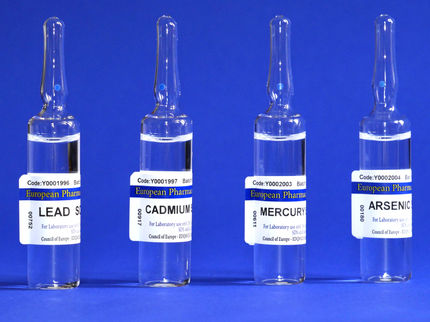Common additive may be why you have food allergies
A Michigan State University researcher has found that a common food additive may be linked to a rise in food allergies.
Cheryl Rockwell, an assistant professor of pharmacology and toxicology in the College of Human Medicine, began studying the possible link between the synthetic food additive tert-butylhydroquinone, or tBHQ, nine years ago.
Now she has received an award from the National Institute of Environmental Health Sciences to continue her work. The Outstanding New Environmental Scientist, or ONES, award comes with a $1.5 million, five-year grant to support her research.
Rockwell has dreamed of winning the award since she was a postgraduate student. She recently was notified that she was among only five researchers this year to be selected.
Approved by the U.S. Food and Drug Administration in 1972, tBHQ is a preservative in many foods, such as cooking oil, nuts, crackers, waffles and breads. Often tBHQ is not listed on the label, Rockwell said.
Her research has shown that tBHQ causes T cells, a critical part of the body's immune system, to release a set of proteins that can trigger allergies to such foods as nuts, milk, eggs, wheat and shell fish.
"I think of the immune system as a military force," Rockwell said. "Its job is to protect the body from pathogens, such as viruses. The T cells are the generals."
Normally, the T cells release proteins, known as cytokines, that help fight the invaders, she said, but when tBHQ was introduced in laboratory models, the T cells released a different set of cytokines that are known to trigger allergies to some foods.
Her studies showed that when tBHQ was present, the T cells started behaving differently.
"The T cells stopped acting as soldiers in the defense against pathogens and started causing allergies, Rockwell said. "What we're trying to find out now is why the T cells are behaving this way."
The expanded use of tBHQ, she said, parallels a rise in food allergies and an increase in the severity of some allergic reactions.
With her ONES grant, Rockwell plans to study a signaling pathway she has identified in cells that appears to play a role in causing the food allergies when tBHQ is present. She hopes to identify other chemicals that trigger that same signaling pathway.
"We think there could be quite a few," she said, including lead and cadmium.
The National Institute of Environmental Health Sciences created the ONES program to support researchers early in their careers and conduct innovative research to study how the environment influences human health.
"This project is my baby," she said. "I need to keep it going."
Most read news
Other news from the department science

Get the life science industry in your inbox
By submitting this form you agree that LUMITOS AG will send you the newsletter(s) selected above by email. Your data will not be passed on to third parties. Your data will be stored and processed in accordance with our data protection regulations. LUMITOS may contact you by email for the purpose of advertising or market and opinion surveys. You can revoke your consent at any time without giving reasons to LUMITOS AG, Ernst-Augustin-Str. 2, 12489 Berlin, Germany or by e-mail at revoke@lumitos.com with effect for the future. In addition, each email contains a link to unsubscribe from the corresponding newsletter.























































